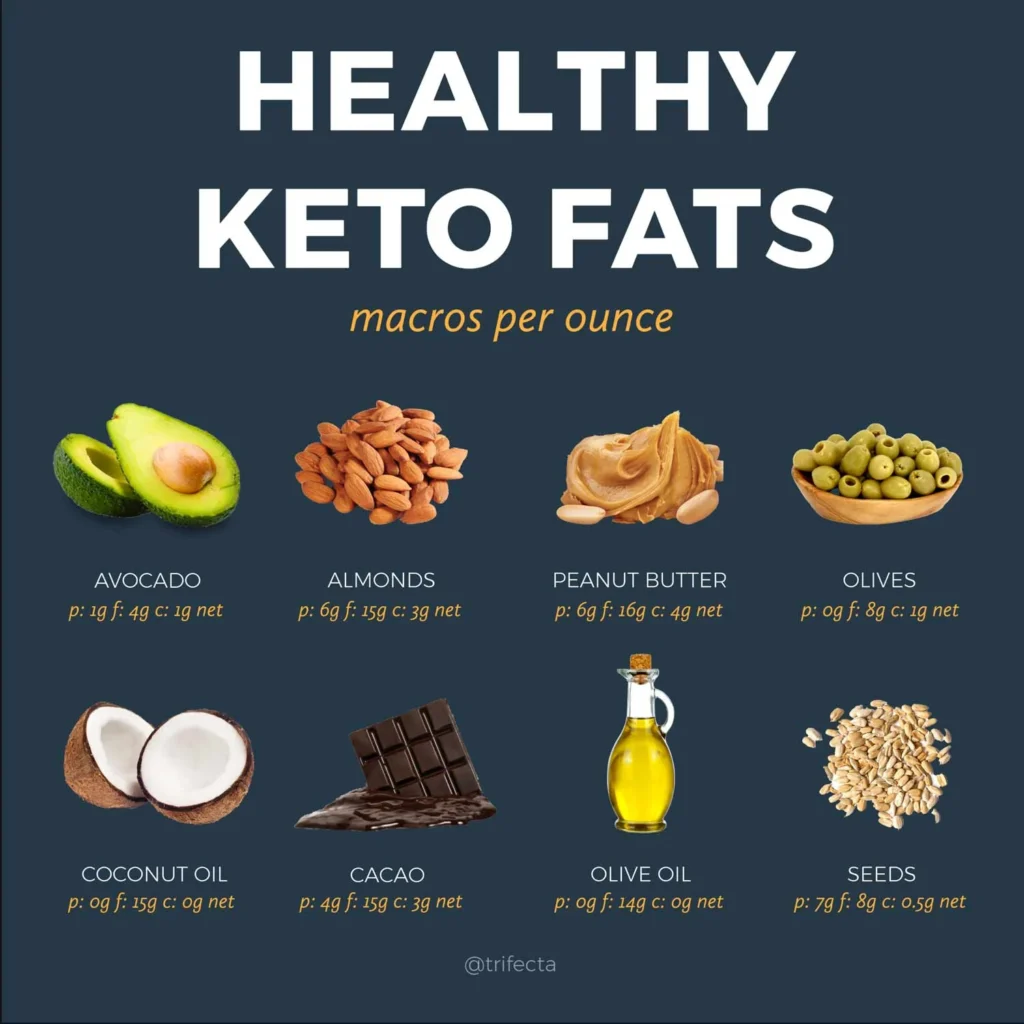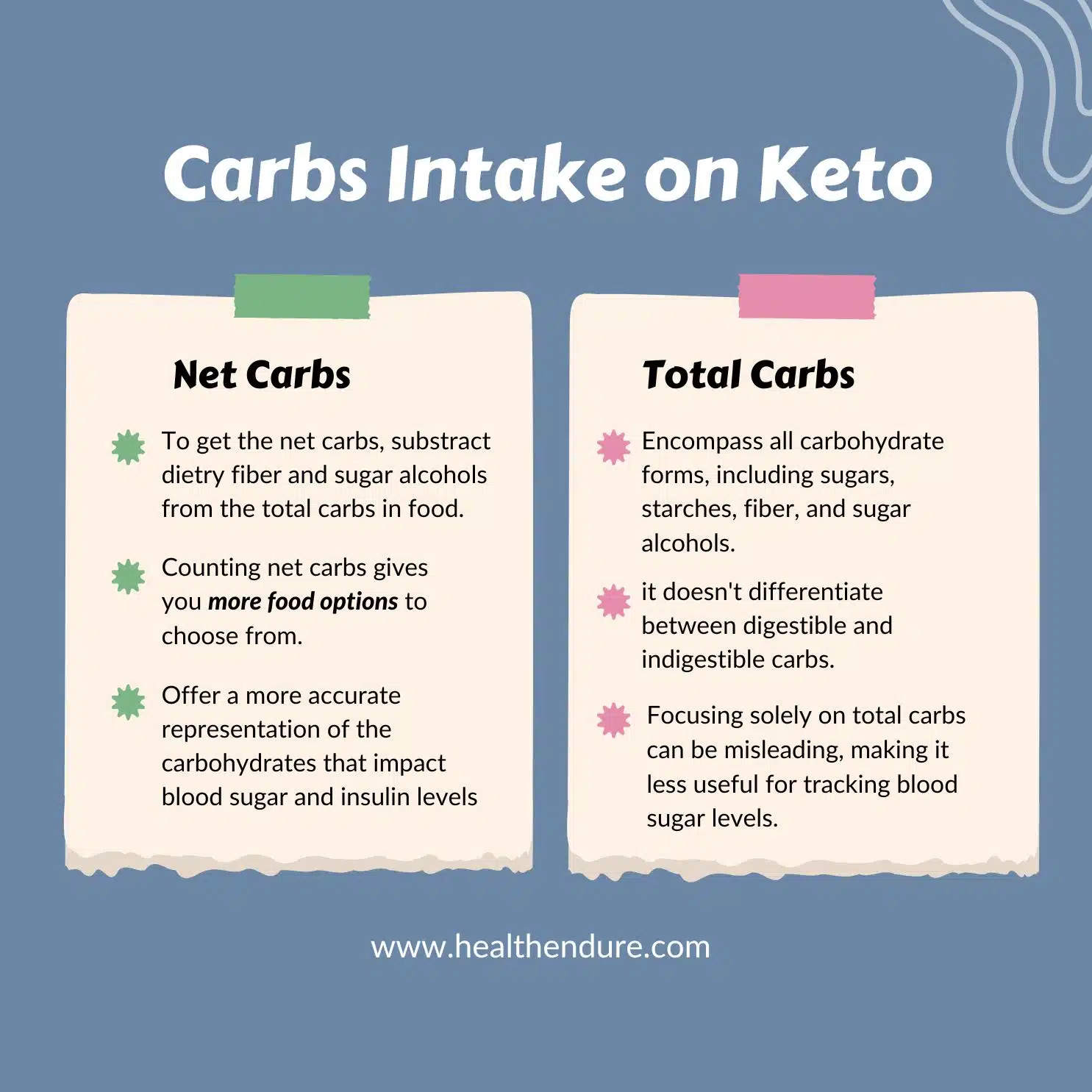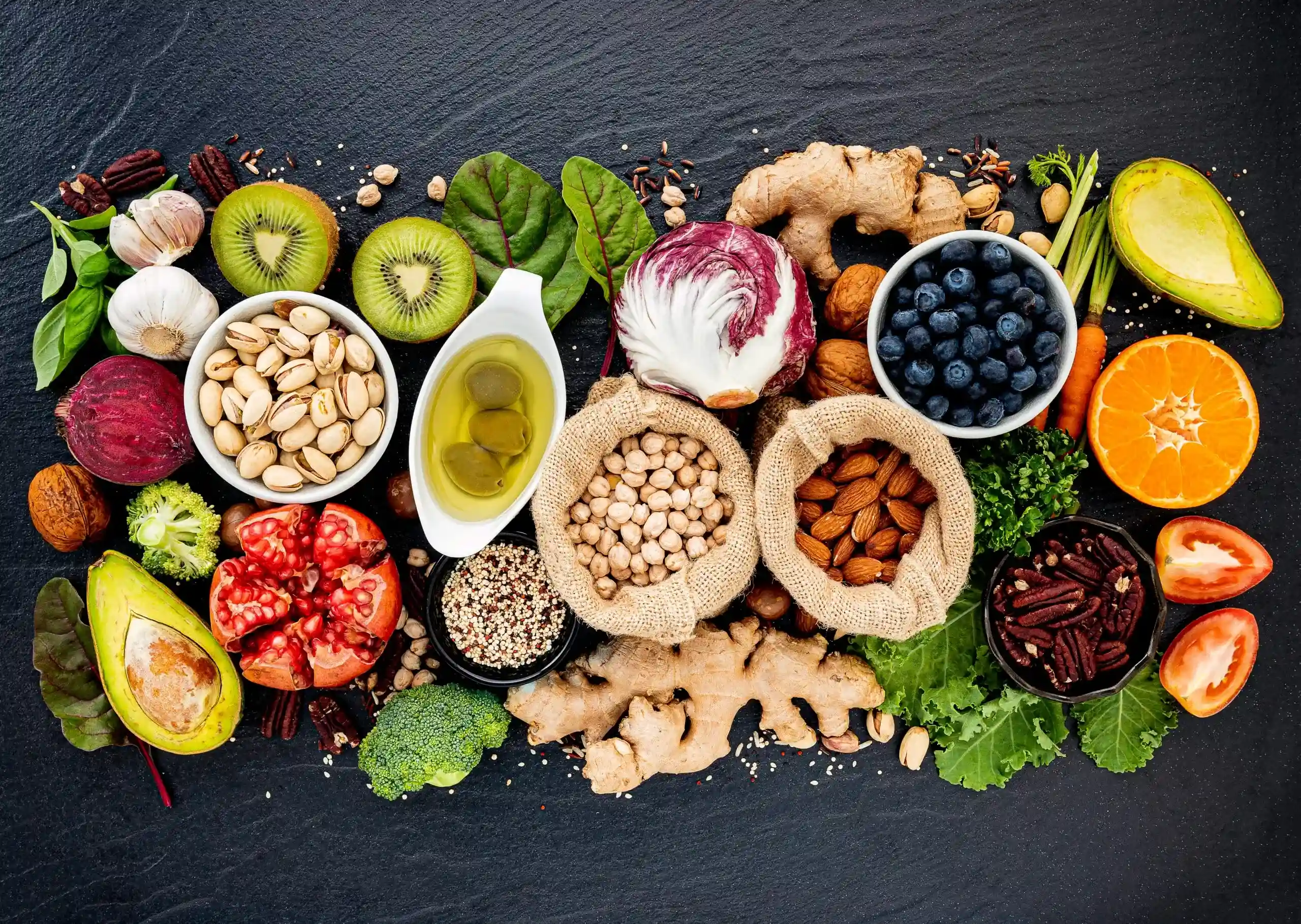The world of weight loss can feel overwhelming, with new diet trends popping up all the time. However, one plan that’s continued to gain popularity in recent years is the ketogenic diet, also known as keto for short. Therefore, if you’re curious about trying keto, understanding the essential keto rules is your first step toward success.
Science Behind Keto Rules
The keto diet isn’t just about restricting carbs and eating more fat. It’s a metabolic shift that unlocks the body’s ability to burn fat for fuel, leading to the state of ketosis. But how exactly does this work?
Understanding Ketosis
Understanding ketosis is fundamental when following keto guidelines. Normally, your body’s preferred source of energy comes from glucose, which is broken down from carbohydrates. However, when you drastically reduce your carb intake on keto, your body starts looking for alternative fuel sources. Consequently, this is where fat comes in.
Through a process called lipolysis, stored fat gets broken down into molecules called ketones. These ketones are then released into your bloodstream and transported throughout the body, where they can be used as energy by your muscles and organs, including your brain!
The Role of Macronutrients–Backbone of Keto Rules

Macronutrients are crucial in keto diet rules, as maintaining the right balance is essential for success. For instance, beginners often ask, “What does a keto diet consist of?”. The answer is that the success of keto hinges on a specific balance of macronutrients – the three main categories of food that provide us with energy: carbohydrates, protein, and fat. Here’s a closer look at their roles in the keto equation:
- Fat (High): As the primary fuel source in ketosis, healthy fats become a crucial part of your diet. Think keto friendly food options like avocados, olive oil, nuts, and fatty fish. These keep you feeling satisfied and provide sustained energy.
- Protein (Moderate): Protein is essential for maintaining muscle mass and overall health. However, excessive protein intake can prevent ketosis by allowing your body to convert some amino acids (protein building blocks) into glucose. Lean meats, fish, and eggs are excellent protein sources on keto.
- Carbohydrates (Very Low): This is where the magic happens! By drastically reducing your carb intake (typically below 50 grams per day), you force your body to switch to burning fat for fuel. Sugary drinks, refined grains, and starchy vegetables are major carb culprits to limit.
How to Stay In Ketosis
Maintaining a state of ketosis is key to reaping the benefits of the keto diet. By adhering to the core Keto rules – specifically, limiting carbs and prioritizing healthy fats – your body will continue to produce ketones and use them as fuel.
The Essential Keto Diet Rules: A Deep Dive
These essential keto rules or keto diet guidelines are your roadmap to achieving and maintaining ketosis for successful weight loss and improved health.
Rule 1: Embrace High-Quality Fats

Including healthy fats is a core principle of the keto diet for beginners, ensuring your body gets the right type of energy. Indeed, fat is no longer the villain on the keto stage – it’s the leading star! Since fat becomes your primary fuel source, incorporating healthy fats into your diet is crucial. However, not all fats are created equal. Therefore, focus on these good-for-you options:
- Monounsaturated fats: Found in avocados, olive oil, and nuts like macadamias and almonds, these fats promote heart health and satiety.
- Polyunsaturated fats: Think of fatty fish like salmon, tuna, and sardines, or sources like flaxseeds and chia seeds. These fats offer anti-inflammatory benefits.
- Saturated fats: While not the enemy, prioritize them in moderation. Sources include grass-fed meats, unprocessed full-fat dairy, and coconut oil.
Remember: Aim for various healthy fats throughout the day to keep your meals satisfying and your body fueled for optimal performance.
Rule 2: Limit Carbs: How Many Carbs To Stay In Ketosis

Carbohydrates are the arch-nemesis of ketosis. They get broken down into glucose, which your body readily uses for energy, potentially hindering your body’s switch to fat burning.
Research mentioned that the American Diabetes Association has observed that weight and metabolic improvements can be achieved through various diets, including low carbohydrate, low fat (implicitly higher carbohydrate), or a Mediterranean-style diet (which typically has an intermediate level of carbohydrates).
Here’s how to navigate the world of carbs on keto:
- Focus on net carbs: This refers to total carbs minus fiber, as your body doesn’t absorb fiber the same way. Therefore, aim to stay below 50 grams of net carbs per day, ideally even lower, to achieve ketosis more quickly. Paying attention to net carbs is a significant aspect of keto principles, helping you stay within your daily carb limit.
- Beware of hidden carbs: Sugary drinks, refined grains like white bread and pasta, and starchy vegetables like potatoes and corn are major culprits.
- Embrace low-carb alternatives: Don’t despair! There’s a world of delicious low-carb veggies like leafy greens, broccoli, and asparagus to fill your plate.
Pro Tip: Utilize online resources or mobile apps to track your daily carb intake and ensure you’re staying within your limits.
Rule 3: Prioritize Moderate Protein Intake

It’s important to manage protein intake carefully when deciding what to eat on a keto diet to maintain muscle without disrupting ketosis. Consequently, this is critical to maintaining muscle mass, which plays a vital role in overall health and metabolism.
Research indicates that healthy adults with minimal physical activity require approximately 0.8 grams of protein per kilogram of body weight daily. However, for individuals engaging in regular exercise, protein needs increase. To support muscle growth and repair, those with moderate activity levels may benefit from 1.0 to 1.3 grams. In comparison, athletes or highly active individuals require 1.2 to 1.6 grams per kilogram of body weight per day.
However, too much protein can disrupt ketosis. Here’s the key:
- Aim for 0.8-1 gram of protein per pound of lean body mass: This ensures you’re getting enough protein without going overboard.
- Choose high-quality protein sources: Lean meats, poultry, fish, eggs, and certain plant-based options like tofu and tempeh are excellent choices.
Remember: While protein is important, don’t let it overshadow healthy fats. Prioritize fats as your primary fuel source while ensuring adequate protein intake for muscle health.
Rule 4: Stay Hydrated and Replenish Electrolytes
Water is your best friend on keto! As you transition into ketosis, your body may expel more fluids through urination, leading to dehydration. Therefore, staying hydrated is an often overlooked but vital component of low-carb diet rules, as it supports overall health and aids in the metabolic process. Here’s why staying hydrated is essential:
- Optimal bodily functions: Water is vital for various bodily functions, including digestion, nutrient absorption, and temperature regulation.
- Reduced cravings: Dehydration can sometimes mimic hunger pangs. Staying hydrated can help you curb cravings and make informed eating choices.
- Improved energy levels: Feeling sluggish? Dehydration can be a culprit. Drinking plenty of water keeps you energized and focused.
Electrolytes also deserve your attention on keto. These minerals, such as sodium, potassium, and magnesium, play essential roles in muscle function, nerve transmission, and blood pressure regulation. Consequently, during the initial keto transition, you may lose electrolytes through urination, potentially leading to symptoms like fatigue, headaches, and muscle cramps.
Here are some tips to stay hydrated and replenish electrolytes on keto:
- Drink plenty of water: Aim for at least eight glasses of water daily, adjusting based on your activity level and climate.
- Consider unsweetened herbal teas or flavored water for variety.
- Electrolyte-rich broths: Bone broth or vegetable broths are a delicious and hydrating way to replenish electrolytes.
- Electrolyte supplements: Consult your doctor if you experience persistent symptoms or are concerned about electrolyte balance.
Rule 5: Plan Your Meals and Reap The Benefits Of Ketogenic Rules
Planning your meals meticulously is key to following keto guidelines effectively, ensuring you always have keto-friendly options available. Furthermore, keto success isn’t just about what you eat; it’s also about how you approach your lifestyle. Therefore, here’s how planning and healthy habits can empower your keto journey:
- Meal planning: Planning your meals helps you make informed choices, avoid unhealthy temptations, and stay within your macros.
- Intermittent fasting (optional): This eating pattern can be beneficial for some individuals on keto. Consult a healthcare professional before starting intermittent fasting.
- Prioritize sleep: Getting enough quality sleep (around 7-8 hours per night) is crucial for overall health and can also regulate hormones that impact hunger and metabolism.
- Manage stress: Chronic stress can disrupt hormones and hinder weight loss efforts—practice stress management techniques like meditation or yoga.
Common Mistakes and Deviation From Keto Principles
The keto journey is a fantastic path toward improved health and weight loss. However, even the most enthusiastic beginners can stumble along the way. Consequently, here we’ll unveil some common keto mistakes and equip you with strategies to navigate them successfully:
Mistake 1: Not Tracking Macros
Keto thrives on balance. While understanding the general keto diet rules is crucial, tracking your macronutrients (fats, protein, carbs) ensures you’re staying within your personalized keto range. This practice can be done through online tools or mobile apps.
Solution: Familiarize yourself with macro tracking tools and utilize them to ensure you’re hitting your fat, protein, and carb goals.
Mistake 2: Going Too Low on Carbs (While Ignoring Vegetables)
While drastically reducing carbs is essential for ketosis, eliminating them can be counterproductive. Non-starchy vegetables are packed with important vitamins, minerals, and fiber that your body needs.
Solution: Embrace low-carb veggies like leafy greens, broccoli, asparagus, and zucchini. Aim for at least five servings per day to stay nourished and maintain a healthy fiber intake.
Mistake 3: Prioritizing Convenience Over Quality
Keto success isn’t just about counting carbs; it’s about prioritizing high-quality whole foods. Packaged keto-friendly snacks might be convenient, but they often contain hidden carbs, unhealthy fats, and artificial ingredients.
Solution: Focus on preparing meals from scratch using fresh, whole ingredients like fatty fish, grass-fed meats, eggs, nuts, and low-carb vegetables. This practice ensures you’re getting the most out of your food choices.
Mistake 4: Neglecting Electrolyte Replenishment
As discussed earlier, electrolytes play a vital role in your body’s functions. Neglecting their replenishment can lead to unpleasant side effects like fatigue, headaches, and muscle cramps.
Solution: Stay hydrated by drinking plenty of water and consider incorporating electrolyte-rich broths or consulting your doctor about potential electrolyte supplements.
Mistake 5: Skipping Sleep or Ignoring Stress
Finally, skipping sleep or ignoring stress can sabotage your efforts, so adhering to keto diet rules means prioritizing good sleep and stress management. Sleep deprivation and chronic stress can wreak havoc on your keto journey and overall health. These factors can disrupt hormones that regulate hunger and metabolism.
Solution: Prioritize getting 7-8 hours of quality sleep each night. Practice stress management techniques like meditation, yoga, or deep breathing exercises to keep stress hormones in check.
Remember: Learning from mistakes is part of the process. By understanding these common pitfalls and implementing the suggested solutions, you’ll be well on your way to a smooth and successful keto experience.
Conclusion: Long-Term Potential of Keto
The beauty of keto lies in its potential to be a sustainable lifestyle change, not just a quick fix. By focusing on whole, unprocessed foods, prioritizing healthy fats, and maintaining a balanced approach, keto can contribute to lasting health benefits like:
- Improved blood sugar control: Studies suggest keto can be effective for managing blood sugar levels in individuals with type 2 diabetes.
- Weight management: Keto can promote weight loss by reducing cravings and boosting satiety. However, remember, long-term weight management requires a healthy approach beyond just keto.
- Enhanced cognitive function: Some studies suggest keto may improve cognitive function and focus.
The initial stages of keto may involve stricter adherence to the ketogenic diet guidelines, but you can gradually develop a more flexible approach that prioritizes your long-term health goals. Consulting a registered dietitian or healthcare professional can be invaluable for creating a personalized keto plan that fits your needs and preferences.
FAQs about KETO
1. How quickly will I see results on keto?
Results on keto can vary depending on individual factors like starting weight, activity level, and adherence to the rules. Some people experience weight loss within the first week, while others may take a few weeks to reach ketosis and see noticeable changes.
2. Is keto safe for everyone?
While keto can be beneficial for many, it’s crucial to consult your doctor before starting, especially if you have any pre-existing health conditions. Keto may not be suitable for pregnant or breastfeeding women, individuals with certain kidney or liver diseases, or those taking specific medications.
3. What are some side effects of keto?
The initial keto transition can sometimes lead to temporary side effects like fatigue, headaches, and muscle cramps, also known as the “keto flu.” These typically subside within a few days as your body adjusts to ketosis. Staying hydrated and replenishing electrolytes can minimize these side effects.
4. Can I have cheat days on keto?
The effectiveness of “cheat days” on keto depends on your goals and how often you indulge. Occasional breaks from strict keto may disrupt ketosis and slow down progress. However, a more flexible approach can be sustainable for some individuals in the long term. Consulting a healthcare professional can help you determine if cheat days are appropriate for your goals.
5. What are some tips for staying motivated on keto?
- Set realistic goals: Focus on progress, not perfection.
- Find a keto buddy: Having someone to share the journey with can be encouraging.
- Explore delicious keto recipes: There’s a world of flavorful low-carb options to keep your taste buds happy.
- Track your progress: Seeing your achievements can fuel your motivation.
- Focus on the positive changes: Celebrate improvements in your health and well-being.











